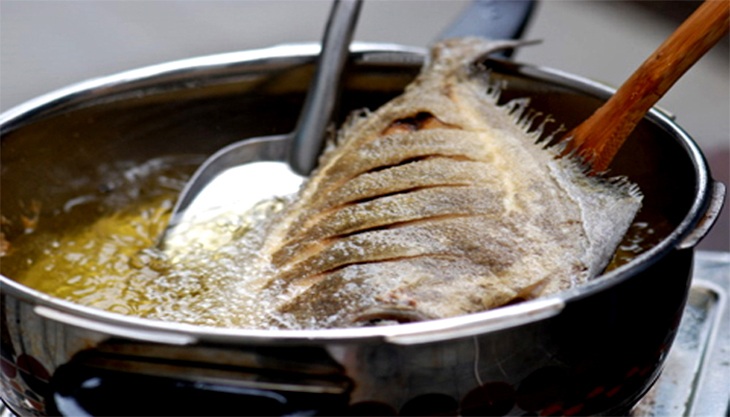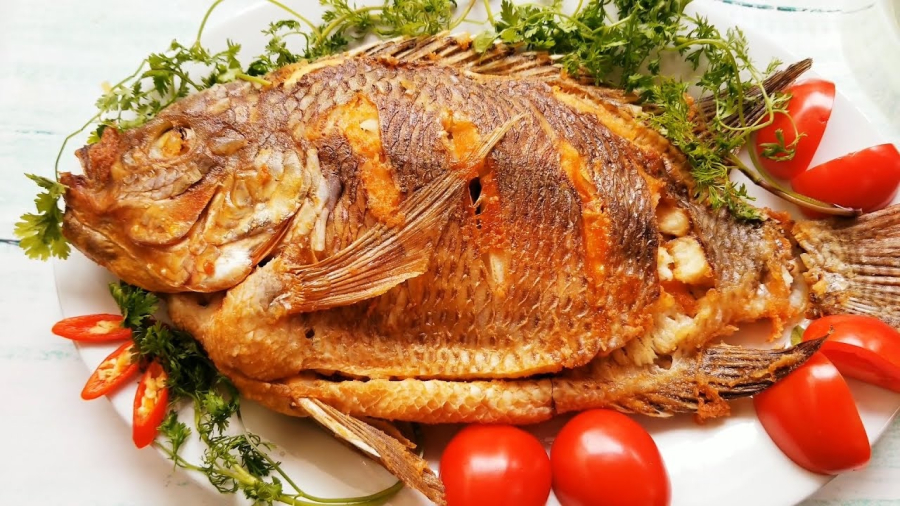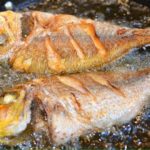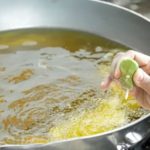Dressing up Fish
This tip is not well known because people think that dressing up fish will make it less appetizing. However, the dressing actually helps protect the fish and makes it more crispy when eaten. The dressing is usually made from flour or breadcrumbs. And that’s also the secret to making other fried foods delicious. You can also crumble bread to make the dressing.

After preparing the fish, make sure it is dry. Before frying the fish, coat it with a thin layer of dressing. Remember to keep it thin because if it’s too thick, the fish will become less appetizing and lose its natural flavor. When coating the fish, fry it in a deep pan of oil so that the flesh and dressing are evenly cooked, without being soggy or tough.
Using Salt
When adding oil to the pan, sprinkle a few grains of salt and continue to heat the pan and fry the fish as usual, the oil will no longer splatter. In addition, salt is used to firm and flip the fish. Before frying the fish, soak it in diluted saltwater for about 10-15 minutes. Then drain or pat the fish dry before frying.
1. Tip for Non-Stick Frying
Brush Egg Whites on the Fish
Before frying the fish, brushing egg whites on the entire surface will make the fish tasty, prevent it from sticking, and give it a crispy skin.
Place Ginger at the Bottom of the Pan
Before frying the fish, rub a slice of ginger all over the pan. This is one of the most effective methods to prevent fish from sticking, and it works with other fried foods as well.
Don’t Put Too Much Fish at Once
This is something that not everyone knows. In principle, the amount of heat provided by the fire is limited, so if you put too much fish, the heat will be insufficient, resulting in uneven cooking and the fish may end up undercooked or overcooked. In addition, you should cover the pan to distribute the heat evenly, helping the fish cook from the inside out.
Covering the pan will cause the steam to condense, so be careful not to let the water droplets fall into the pan, as this will soften and dampen the fish, and cause the oil to splatter. And more importantly, before frying, you should make multiple cuts on the fish. This method allows the oil to penetrate deep and create a crispy texture for the fish, making it evenly cooked and visually appealing.
2. Non-Stick Frying Without a Non-Stick Pan
After buying the fish, scale, clean the belly and remove the guts. If the fish is large, make a few slashes on both sides. Rub with lime and salt to remove any fishy or slimy smell, then rinse with rice water to clean.

Use a food-grade towel to thoroughly dry both the outside and inside of the fish. In some places, add a little salt to firm up the fish, then hang it in a thin basket to drain and let it dry. Completely drying or draining the fish is the key to prevent oil splatter when frying.
Some people use crispy batter or flour to coat the fish when frying, but the fish will lose its natural crispy and delicious taste, sometimes just feeling the flour.
Using old banana leaves: Banana leaves have a shiny surface that acts as an effective non-stick coating. This is a method that many mothers have used for making omelettes or fried eggs with fragrance leaves. Put the cleaned and dried banana leaves into the pan, add a little cooking oil, then turn on the heat and fry the fish. Keep it until one side of the fish is golden and crispy before flipping to fry the other side. The banana leaves limit the splashing of oil when frying fish and also provide a natural aroma.
Note: Don’t pour the hot oil, put the banana leaves in first, as it may cause the leaves to be suddenly burned and splash oil, making it difficult to put the fish in. During frying, wait until one side of the fish is golden and crispy before flipping to fry the remaining side.

































